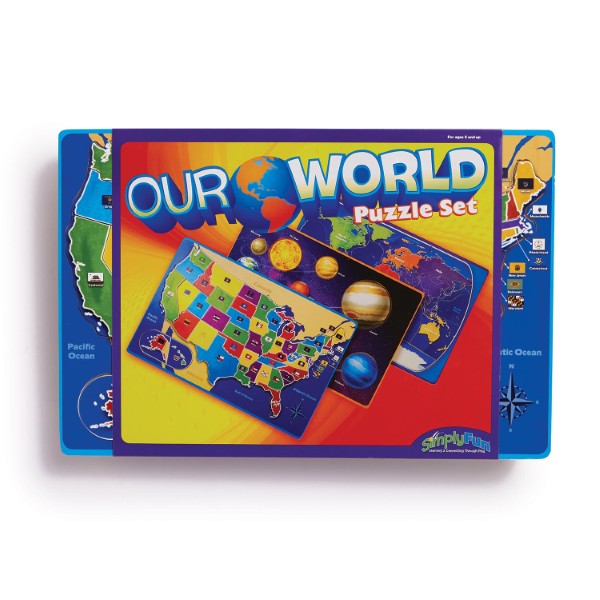
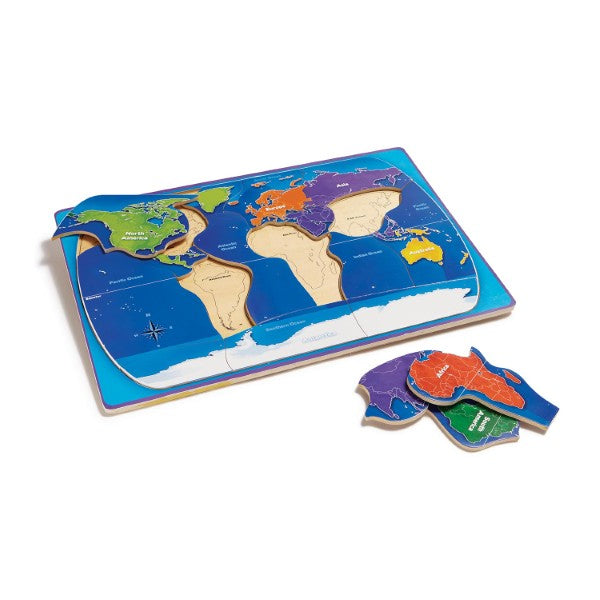
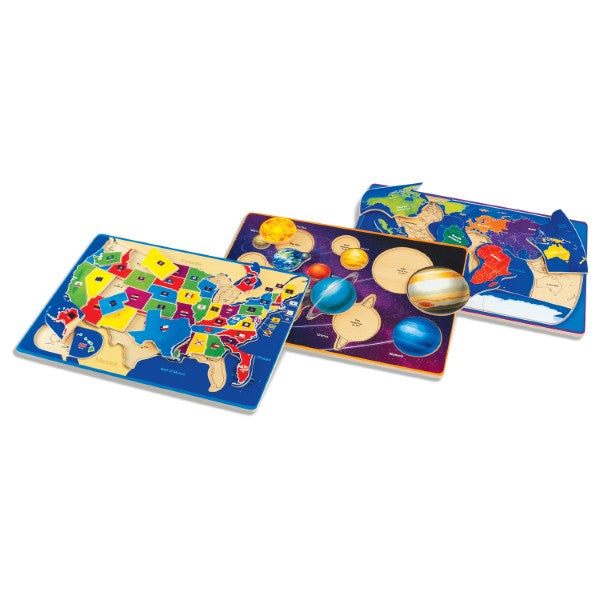
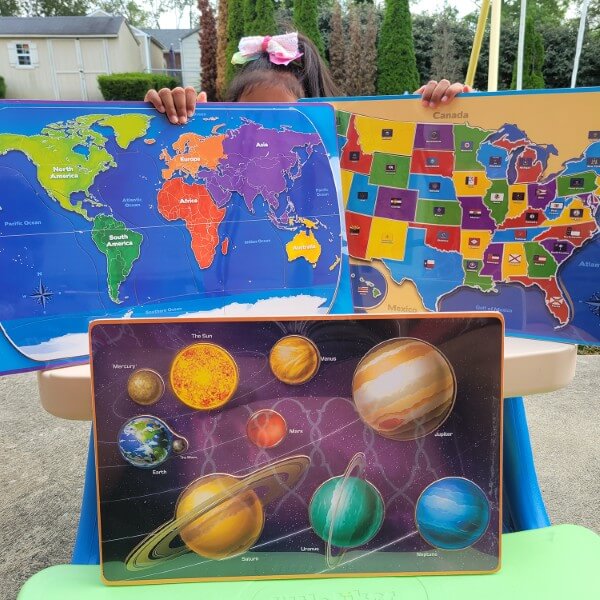
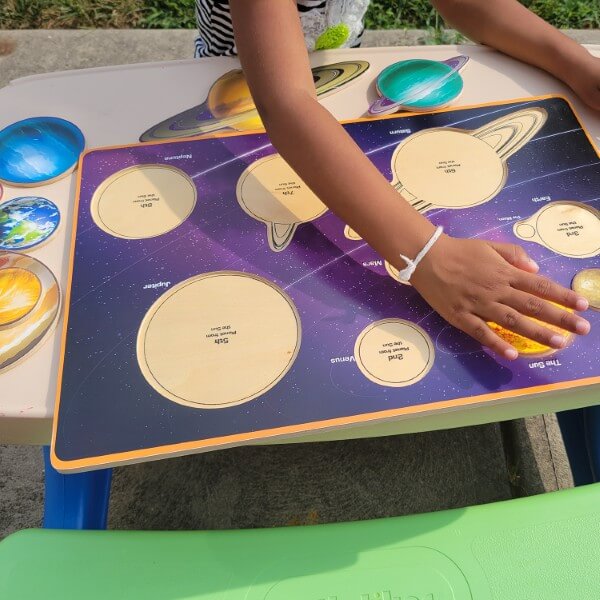


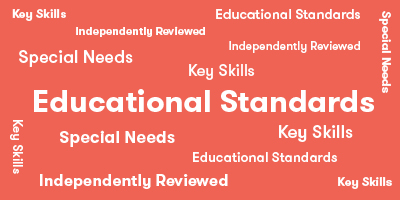
Head Start*
Language
- Listening & Speaking
- Understands an increasingly complex and varied vocabulary.
Math:
- Geometry & Spatial Sense
- Progresses in ability to put together and take apart shapes.
- Begins to be able to determine whether or not two shapes are the same size and shape.
- Shows growth in matching, sorting, putting in a series and regrouping objects according to one or two attributes such as color, shape or size.
- Patterns & Measurement
- Begins to make comparisons between several objects based on a single attribute.
Science
- Reasoning & Problem Solving
- Grows in recognizing and solving problems through active exploration, including trial and error, and interactions and discussions with peers and adults.
- Scientific Knowledge
- Expands knowledge of and abilities to observe, describe and discuss the natural world, materials, living things and natural processes.
Core Standard*: History/Social Studies
Geography
- Understands the physical characteristics, cultural characteristics, and location of places, regions, and spatial patterns on the Earth’s surface
- Understands and uses maps and globes to identify major bodies of water and continental land masses. Grade Level 1st

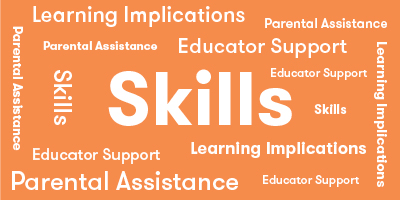
Explore
What Does Child Do To Use Skill In The Game?
Players may explore if encouraged. See Implications for Learning and Adult Support.
How Parents Can Assist Learning
To help children in building the puzzle, parents can encourage children to look closely at the piece they are trying to place. Children usually focus on the shape, the color, or the content on the piece. Determine what they are focusing on, and help them think about the other aspects as well. For instance, "Yes, that piece does have a straight side, but you are looking for a piece that has a rough edge, too." Also, parents can ask questions such as "Tell me what the flag looks like for our state" in order to prompt children to look at all the information on the puzzles closely.
Learning Implications and Educator Support
To help children in building the puzzle, parents can encourage children to look closely at the piece they are trying to place. Children usually focus on the shape, the color, or the content on the piece. Determine what they are focusing on, and help them think about the other aspects as well. For instance, "Yes, that piece does have a straight side, but you are looking for a piece that has a rough edge, too." Also, parents can ask questions such as "Tell me what the flag looks like for our state" in order to prompt children to look at all the information on the puzzles closely.
Determine
What Does Child Do To Use Skill In The Game?
Players must determine the characteristics of puzzle pieces based on shape, size, and sometimes color. They also need to determine what locations on the puzzle could accommodate the puzzle piece.
How Parents Can Assist Learning
To help the youngest children, allow them to look at the images of the puzzles on the packaging so they can see how a puzzle looks when completed.For the U.S. puzzle, parents can also help children find the capital of the state by looking under the pieces and reading the capital aloud to the children.
Learning Implications and Educator Support
To help the youngest children, allow them to look at the images of the puzzles on the packaging so they can see how a puzzle looks when completed.For the U.S. puzzle, educators can introduce children to the concepts of states, capitals and flags. Also, use directional language like above or below to help children look for location to place a puzzle piece.
Compare
What Does Child Do To Use Skill In The Game?
Players will compare shape of puzzle pieces with the spaces open on the puzzle board.
How Parents Can Assist Learning
Comparing shapes is important for young children to begin understanding geometry and spatial relations. Encourage children to rotate the pieces to help them make more accurate comparisons.Parents can add descriptive language like larger, smaller, straight, rough, blue and green to help build vocabulary.
Learning Implications and Educator Support
Comparing shapes is important for young children to begin understanding geometry and spatial relations. Encourage children to rotate the pieces to help them make more accurate comparisons.Educators can add descriptive language like larger, smaller, straight, rough, blue and green to help build vocabulary.
Remember
What Does Child Do To Use Skill In The Game?
How Parents Can Assist Learning
Although not required, parents can encourage children to remember states, cities, or countries they have visited, read about, or know someone who lives there. Making a connection with previous information stimulates memory.
Learning Implications and Educator Support
Educators can encourage children to remember states, cities, or countries they have visited, read about, or know someone who lives there. Making a connection with previous information stimulates memory.
Predict
What Does Child Do To Use Skill In The Game?
Once a piece is selected, children make a prediction about where it will fit.
How Parents Can Assist Learning
Parents can help children by selecting pieces that have a recognizable shape (e.g., such as Texas) and have them place those first. Children may get frustrated if they start with an interior state (such as Colorado) that does not have a distinctive shape.
Learning Implications and Educator Support
Educators can help children by selecting pieces that have a recognizable shape (e.g., such as Texas) and have them place those first. Place exterior states in one area and interior states in another. Children may get frustrated if they start with an interior state (such as Colorado) that does not have a distinctive shape. After children complete the U.S. puzzle several times, all pieces can be grouped together.
Experiment
What Does Child Do To Use Skill In The Game?
If a piece does not fit on the first attempt, a player may experiment with changing its orientation or location in order to find the right spot to place it.
How Parents Can Assist Learning
If a child has the correct piece but cannot get it to fit, show them how to change the orientation (e.g.: by turning 180 degrees) so that it will fit into the puzzle. The parent can cue the child by just saying, "Try another way."
Learning Implications and Educator Support
If a child has the correct piece but cannot get it to fit, show them how to change the orientation (e.g.: by turning 180 degrees) so that it will fit into the puzzle. The educator can cue the child by just saying, "Try another way."
Practice
What Does Child Do To Use Skill In The Game?
The more players engage with the puzzles, they will improve fine motor and comparison skills. This will allow them to more quickly assemble the puzzles.
How Parents Can Assist Learning
To help children begin to understand the content of the puzzles, try to relate the content to people or experiences that are directly related to the child. For example, point to the earth and say, "This is the earth, the planet we live on." Or, point to the state you live in and describe some of the facts about it.
Learning Implications and Educator Support
To help children begin to understand the content of the puzzles, try to relate the content to people or experiences that are directly related to the child. For example, point to the earth and say, "This is the earth, the planet we live on." Or, point to the state you live in and describe some of the facts about it.
Solve
What Does Child Do To Use Skill In The Game?
Players solve the puzzle by putting all the pieces in the proper location.
How Parents Can Assist Learning
To help younger children, allow them to look at the packaging so they can see if they placed the piece in the correct location. Give prompts or suggestions, such as, "Look at the pattern on the board underneath the continents."
Learning Implications and Educator Support
To help younger children, allow them to look at the packaging so they can see if they placed the piece in the correct location. Give prompts or suggestions, such as, "Look at the pattern on the board underneath the continents."
Review
What Does Child Do To Use Skill In The Game?
How Parents Can Assist Learning
Although not required, parents can ask children about how they figured out where the different pieces went. Verbalizing their strategy helps children think about what they did and why.
Learning Implications and Educator Support
Although not required, educators can ask children about how they figured out where the different pieces went. Verbalizing their strategy helps children think about what they did and why. Educators can then determine if they can provide additional strategies for children to try.
Imagine
What Does Child Do To Use Skill In The Game?
Children may use imagination if encouraged. See Implications for Learning and Adult Support.
How Parents Can Assist Learning
To stimulate their imaginations, ask children to imagine what the other planets, continents or states might be like; what would it be like to live in those different locations; or where would they like to go some day. Provide a few facts for the children to give them a mental picture of the place; or, look up the planets online with them.
Learning Implications and Educator Support
To stimulate their imaginations, ask children to imagine what the other planets, continents or states might be like; what would it be like to live in those different locations; or where would they like to go some day. Provide a few facts for the children to give them a mental picture of the place; or, look up the planets online with them.
Create
What Does Child Do To Use Skill In The Game?
Children may be creative if encouraged. See Implications for Learning and Adult Support.
How Parents Can Assist Learning
Make up stories with children that involve different locations. You might use some real experiences, like a trip you took to a different state, to get the story started; or create entirely fanciful stories based on outer space explorations throughout our solar system.
Learning Implications and Educator Support
Make up stories with children that involve different locations. You might use some real experiences, like a trip you took to a different state, to get the story started; or create entirely fanciful stories based on outer space explorations throughout our solar system.
*Data compiled from CCSSI ELA Standards, WA Science Standards, and Washington Social Studies Standards

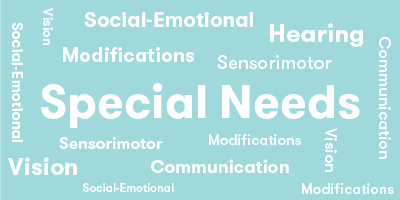
Cognitive
Suggestions for How to Modify Play Experience
Have children with cognitive delays do the planet puzzle first. If they are successful with this puzzle, move to the continents. Use a black marker to outline the puzzle piece shapes on the underlying wooden board. This will make it easier for children with cognitive delays to match the shapes without being distracted by the other markings. Finally, the U.S. puzzle can be tackled. This order is based on the complexity of the puzzles, not the conceptual understanding needed. Children with cognitive delays may not be able to understand the concepts of these three puzzles, but can work on the matching, spatial orientation, and persistence to complete them.
Communication
Suggestions for How to Modify Play Experience
Take turns placing a puzzle piece. After placing a piece, children explain why they picked the piece and how they knew where to put it. This variation of completing a puzzle enhances both language production and language comprehension. Children have to both produce and respond to language. The activity also encourages children to focus and pay attention through several sentences.
Sensorimotor
Suggestions for How to Modify Play Experience
Simplify the harder puzzles. For the continents and states puzzles, give children just 1/3 (or fewer if needed) of the pieces and instruct them to start on the left side, or from top to bottom. This gives the child a constant edge to place pieces against as a support. They do not have to try to match pieces only to the underlying lines
An option for children with fine motor concerns is to remove just the pieces of one color. This makes the puzzle easier. The child should be able to match and drop in the state or puzzle piece (some have more than one state) needed.
Social Emotional/Behavioral
Suggestions for How to Modify Play Experience
For children who are impulsive or easily frustrated, use the planet puzzle first, then the continents, then the states. This may build persistence if the child experiences success with each successive puzzle.
Give each of two children half off the puzzle pieces, with one child taking the 17 puzzle pieces on one-half of the puzzle, and the other child taking the 17 puzzle pieces on the other half of the puzzle. They then work independently, but quickly toward the middle to see who can finish first. They then switch puzzle pieces and try again.
Vision
Suggestions for How to Modify Play Experience
An option for children with low vision is to remove half of the pieces of one color. This makes the puzzle opening more obvious. Children can feel the shape of the space and the shape of the missing puzzle pieces to find a match.
Color the base wood of the continent puzzle in the colors of the continent puzzle pieces. For example, color Africa in red. This will make it easier for children with low vision to find a match.
Hearing
Suggestions for How to Modify Play Experience
Children with hearing impairments should not have a problem with the puzzles.
*Data compiled from CCSSI ELA Standards, WA Science Standards, and Washington Social Studies Standards

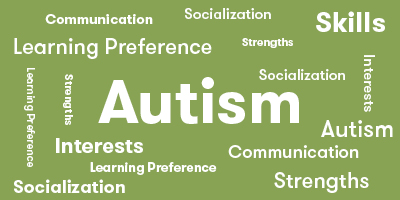
Autism Strengths & Interests
Short Summary of Strengths & Interests
- Likes puzzles and fitting things together.
- Is interested in maps or outer space.
- Is starting to learn spatial reasoning.
Is good at matching visual items
Is This Game Appropriate? Yes
Description
All of the Our World puzzles require children to match shapes of planets, continents or states to a corresponding space on the puzzle board. They can begin with an easy, separate piece puzzle of the planets, move to an interlocking puzzle of the continents, and then to the more complex U.S. states puzzle.
Has a good memory for sensory details, including visual, touch, taste and smell
This game is not appropriate
Has a good memory for words, phrases and dialouge
This game is not appropriate
Has a good memory for pictures, numbers and patterns
Is This Game Appropriate? Yes
Description
After doing the puzzles several times, particularly the simpler ones, the child will be able to remember the graphics on different pieces as spatial memory cue.
Likes to put things in order or a sequence
Is This Game Appropriate? Yes
Description
Although children do not need to complete the puzzle in a specific sequence or order, children with autism will probably create an order for putting together the puzzle. This order makes sense to them, and may become invariant
Learns through visualizing or "replaying" actions in their mind
This game is not appropriate
Likes activities with rules, such as math and phonics
This game is not appropriate
Is very concrete and literal
Is This Game Appropriate? Yes
Description
Although children do not need to complete the puzzle in a specific sequence or order, children with autism will probably create an order for putting together the puzzle. This order makes sense to them, and may become invariant
Learns in small "chunks" (for example, phone numbers are 3 chunks of number xxx-xxx-xxxx that are combined together)
Is This Game Appropriate? Yes
Description
After putting together the puzzles several times, children will recognize which pieces go to which puzzle and which are states, continents or planets. Each set has characteristics that define it (e.g., planets are round, continents are large irregular shapes, and states are a mix of different sizes and shapes). These characteristic, or "chunks", of information help children analyze the different concepts related to our world.
Is good at nonverbal reasoning and logic
This game is not appropriate
Likes spatial problem solving
Is This Game Appropriate? Yes
Description
Putting together the puzzles involves spatial problem solving as children must rotate the pieces to orient them correctly. They will also find some pieces that are close to correct, but not an exact match, so they will need to make size and shape comparisons.
Can read well with good vocabulary, though may not fully comprehend content
This game is not appropriate
Likes to use and has good fine motor skill
Is This Game Appropriate? Yes
Description
Fine motor skills are used for manipulating and placing the puzzle pieces. Children who like manipulative and fine motor activities will particularly like the U.S. puzzle.
Likes established routines or set ways of doing things
This game is not appropriate
Likes manipulating, constructing or building things
Is This Game Appropriate? Yes
Description
Puzzles are a form of construction in which the end result is typically known in advance. This type of construction is preferred by children who like predictability and routine outcomes.
Likes to use and has good musical abilities
This game is not appropriate
Likes to use and has good drawing skills
This game is not appropriate
Autism Special Considerations
Appears to ignore other's communication and/or has difficulty giving eye contact to a communication partner
Is This Game Appropriate for Child with Characteristic? Yes
Can Child with Characteristic Play Game w/o Modification? Yes
Strategies for Developing Compensatory Skills:
This is primarily an individual activity, though it can be made into a turn taking game.
Has difficulty understanding complex verbal directions
Is This Game Appropriate for Child with Characteristic? Yes
Can Child with Characteristic Play Game w/o Modification? No
Strategies for Developing Compensatory Skills:
Combine short verbal instructions with visual and physical examples of each step. For example give children coastal pieces first for the U.S. Puzzle. Give one continent at a time for the world, and a large planets first for the solar system. Use photos from the box to illustrate what needs to be done.
Use hand-over hand guidance if needed, so children feel the actions as the directions are being given. This helps develop the child's memory for the correct movements. Gradually reduce the support as children learn how to try different orientations with the pieces.
Uses vocabulary inaccurately or demonstrates echolalia (repeating another's speech)
Is This Game Appropriate for Child with Characteristic? Yes
Can Child with Characteristic Play Game w/o Modification? Yes
Strategies for Developing Compensatory Skills:
Provide correct labels for words when incorrect labels are stated by the child.
Respond to immediate echolalia (repeating what was just said) by rephrasing the child's response into a correct format, so the child can hear and repeat that phrase. For example, assume you are playing with a child named Andy and you say, "Your turn," and Andy repeats, "Your turn." You can say, "It's Andy's turn. You say, my turn." This allows the child to hear and repeat the correct response. Eventually, the child will pick up the pattern of response.
Delayed echolalia (repetition of previously heard comments) may have a hidden meaning or association. Look for connection in the phrase used to the current situation. For example, the child says, "After these messages we'll be right back!" Think what the repeated phrase is associated with for the child. Try to interpret what is meant and rephrase it for the child. For example, you might respond by saying, "It sounds like you want a break for a few minutes. Is that what you mean? You can tell me, 'I need a break.'"
Gets stuck repeating a verbal topic or physical actions and/or has difficulty attending to others' actions or topic.
Is This Game Appropriate for Child with Characteristic? Yes
Can Child with Characteristic Play Game w/o Modification? No
Strategies for Developing Compensatory Skills:
This is an individual activity, so this is not a concern.Extend the child's action to make a correct response. For example, if the child places a piece correctly, say, "That's right. Try another piece."
Has difficulty producing speech/communication
Is This Game Appropriate for Child with Characteristic? Yes
Can Child with Characteristic Play Game w/o Modification? Yes
Strategies for Developing Compensatory Skills:
Communication is not needed for this activity.
Has difficulty sequencing multi-step actions and/or doing complex abstract tasks
Is This Game Appropriate for Child with Characteristic? Yes
Can Child with Characteristic Play Game w/o Modification? Yes
Strategies for Developing Compensatory Skills:
Encourage children to persist to completion of the puzzle. Reinforce after correct placement of three pieces.
Demonstrates difficulty initiating and maintaining social interactions
Is This Game Appropriate for Child with Characteristic? Yes
Can Child with Characteristic Play Game w/o Modification? Yes
Strategies for Developing Compensatory Skills:
No social interaction is required.
Acts out or demonstrates avoidance behaviors when frustrated, overwhelmed, or needs more sensory input.
Is This Game Appropriate for Child with Characteristic? Yes
Can Child with Characteristic Play Game w/o Modification? No
Strategies for Developing Compensatory Skills:
Reduce extraneous noise or allow the child to wear head phones or ear plugs if loud sounds cause anxiety.
A weighted vest worn during the game may provide additional pressure input and thus reduce fidgeting due to sensory needs. Pressure can be calming when used for no more than 20 minutes at a time.
Practice a phrase to ask for help and role play situations in the game where it is needed.
Provide techniques for self-calming, such as holding a special toy.
Allow time for movement. For example, a child who needs to move frequently can be given an opportunity to 'celebrate' their turn by running around the table or jumping up and down 10 times.
Has short attention span for non-preferred activities
Is This Game Appropriate for Child with Characteristic? Yes
Can Child with Characteristic Play Game w/o Modification? Yes
Strategies for Developing Compensatory Skills:
Provide a break when needed.
Use "when...then" phrases. For example, "When you get three pieces in, then I'll let you play with your toy."
Frequently remind the child of the goal of the game. " You are putting all the pieces in to make a picture ."
Needs sameness or consistent routines and/or has difficulty with transitions from one activity to another
Is This Game Appropriate for Child with Characteristic? Yes
Can Child with Characteristic Play Game w/o Modification? No
Strategies for Developing Compensatory Skills:
Play games at the same time every day, so the child anticipates the game routine.
Change the location of the game, so the child may play in different rooms, at the table, or on the floor. This will build tolerance for variation. Prepare the child ahead time for the introduction of a new game. Talk about aspects that will be motivating for the child, and let them explore the parts of the game before setting out the whole game.
Provide a structure for placement of game pieces that can be the same each time the game is played. For example, have a specific location for where the board goes, the pieces, etc.Use an object cue. Let the child hold an object from the game or activity you want to introduce prior to the transition. For example, give the child a puzzle piece and say, "Let's go find the puzzle this goes with."
Has difficulty understanding others' feelings, intentions, and the reasons for others' actions.
Is This Game Appropriate for Child with Characteristic? Yes
Can Child with Characteristic Play Game w/o Modification? Yes
Strategies for Developing Compensatory Skills:
Ask child to explain their own feelings and intentions.
*Data compiled from CCSSI ELA Standards, WA Science Standards, and Washington Social Studies Standards

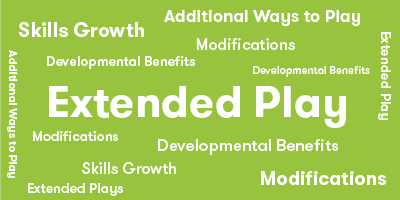
Extra Ways to Play the Game
Have children and adults generate questions about the states, starting with their own state and other states they know. Then look up those states online, in a atlas, almanac, encyclopedia, etc. Try to find the answers to the children's questions. Do the same for the continents and planets. Then when you put the puzzles together the next time, see who can remember the facts they learned.
Materials Needed
Resources for learning facts about the world.
Developmental Benefits
With the puzzles as a motivator, children will go beyond puzzle construction to learn information about the various aspects of their world and solar system. This also teaches children where they can find answers to their questions.
Extra Ways to Play the Game
Download coloring pages for each of the Our World puzzle topics, such as a state, country or planet, for the child to color.
Materials Needed
Internet access, printer, paper, and crayons or markers.
Developmental Benefits
Children will remember the material in the puzzles more when they are exposed to different versions of the material. They will also practice their fine motor skills as they color the pictures. Encourage them to draw their own versions on plain paper as well.
Extra Ways to Play the Game
Play the I See It game. Take turns with the child finding a state and naming something about the state, such as something on the flag, or the color or shape of the state. Give clues until the other player(s) identifies the right state. As a variation of I See It: Give directions for how to find a state. Each player in turn gives directions to the player to their left. For example, "The state that I See is below Iowa and above Arkansas." Or "The state that I See is to the right of Nevada."
Materials Needed
No additional materials needed.
Developmental Benefits
This variation enables children to attend to specific attributes of a puzzle piece to narrow down the choices to the right answer. Children must look carefully and analyze each piece. This variation build children's understanding of and use of directionality vocabulary. Children also need to think carefully to generate questions for others.
*Data compiled from CCSSI ELA Standards, WA Science Standards, and Washington Social Studies Standards
Game Details
- US Map Puzzle
- World Continents Puzzle
- Solar System Puzzle
- Choosing a selection results in a full page refresh.
- Opens in a new window.






